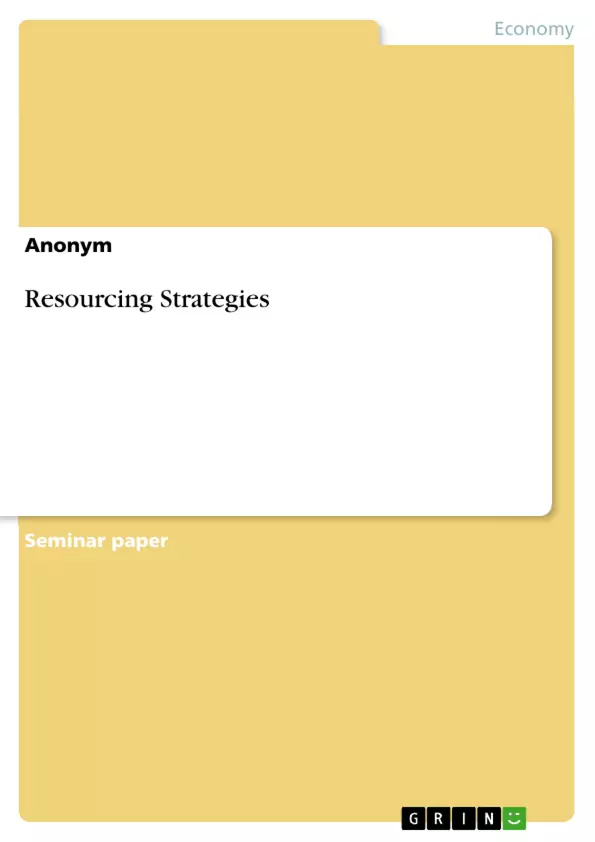The available resources for organisations are people, knowledge, finance and technology (Johnson, Scholes and Whittington 2008: 474).
‘Strategy is the direction and scope of an organisation over the long term which achieves advantage for the organisation through its configuration of resources within a changing environment and to fulfil stakeholder expectations’ (Johnson, Scholes and Whittington 2008: 3). There is an interaction between resources and organisational strategy. The resources can create new strategies, while the strategy provides the framework for the capability of the resources. The success can be enabled by changing the resources to fit the strategy and by developing unique resources to build new strategies on it. In both cases the resources have to be managed efficiently to enable strategic success.
For an organisation it is important to be aware of the adjustment between overall business strategy and strategies concerning the resources (Johnson, Scholes and Whittington 2008).
Table of Contents
- Introduction
- Definition
- Correlation between resource management and strategic success
- Managing People
- People as a resource
- People and behaviour
- Organising people
- Managing Information
- Managing Finance
- Managing for value
- Funding strategy development
- Financial expectations of stakeholders
- Managing Technology
- Development of technology
- Responsibility for technological development
- Consequences for managers
- Conclusion
- References
Objectives and Key Themes
This document examines the strategic management of resources within organizations, focusing on the critical role of people, information, finance, and technology. It explores the relationship between these resources and strategic success, emphasizing how effective management of each element contributes to a company’s overall competitiveness.- The interconnectedness of resource management and organizational strategy
- The importance of people as a strategic resource, including both the “hard” (performance management) and “soft” (leadership and team-building) aspects
- The role of information systems and technology in shaping business models, creating competitive advantage, and influencing organizational structures
- The strategic implications of financial management, including funding strategy development and stakeholder expectations
- The impact of technology on organizational structure, decision-making, and managerial responsibilities.
Chapter Summaries
- Introduction: This chapter introduces the core concept of resource management within an organizational strategy, defining resources as people, knowledge, finance, and technology. It emphasizes the crucial role these resources play in achieving strategic advantage and fulfilling stakeholder expectations.
- Managing People: This chapter examines the strategic importance of managing people, acknowledging their sensitivity to enthusiasm, leadership, and shared decision-making. It outlines the key dimensions of human resource strategy, including performance management, leadership, and organizational structure. The chapter stresses the need for organizations to understand the relationship between business and human resource strategies for achieving competitiveness.
- Managing Information: This chapter explores the interconnectedness of information management and managing people, highlighting the role of information systems and technology in supporting knowledge creation and distribution within an organization. It examines the strategic implications of information systems, focusing on their impact on business models, competitive advantage, and organizational structures.
- Managing Finance: This chapter delves into the strategic aspects of financial management, encompassing managing for value, funding strategy development, and financial expectations of stakeholders. It explores the key aspects of financial planning, budgeting, and resource allocation in relation to organizational strategy.
- Managing Technology: This chapter examines the strategic implications of technological development, emphasizing the role of technology in driving organizational change, shaping business models, and influencing managerial responsibilities. It explores the consequences of technology on organizational structure, decision-making, and workforce skills.
Keywords
Key concepts explored in this work include resource management, strategic management, organizational strategy, people as a resource, human resource management, information systems, technology, financial management, and stakeholder expectations. The text emphasizes the interconnectedness of these elements in achieving organizational success.- Arbeit zitieren
- Anonym (Autor:in), 2009, Resourcing Strategies, München, GRIN Verlag, https://www.grin.com/document/134344



